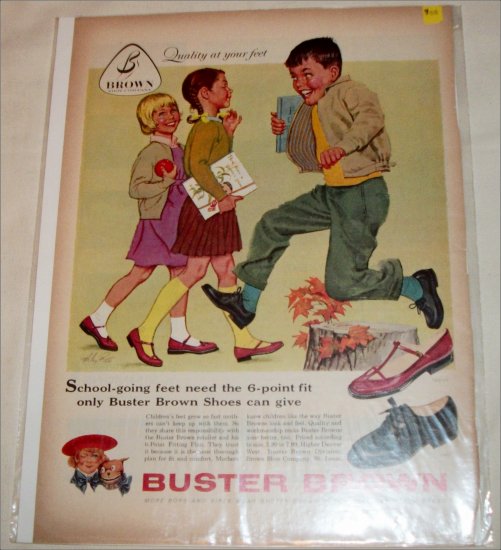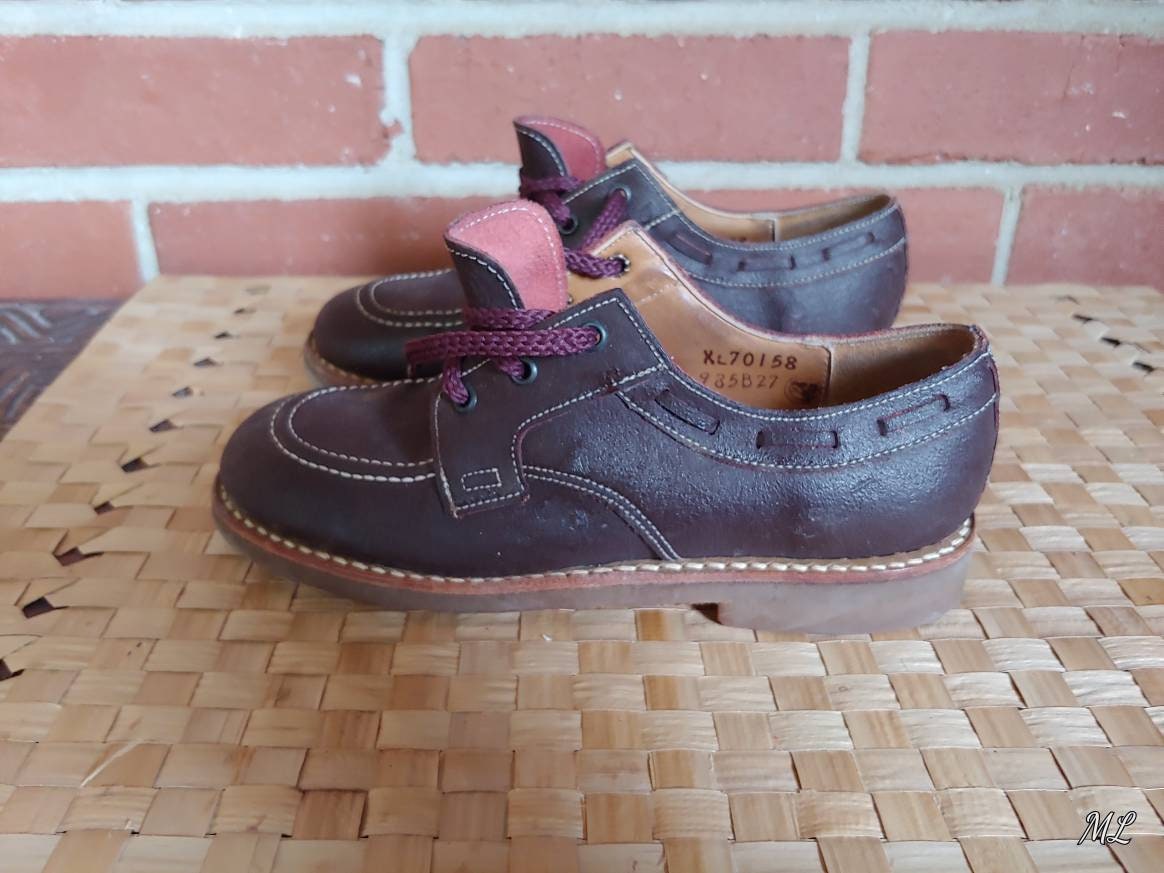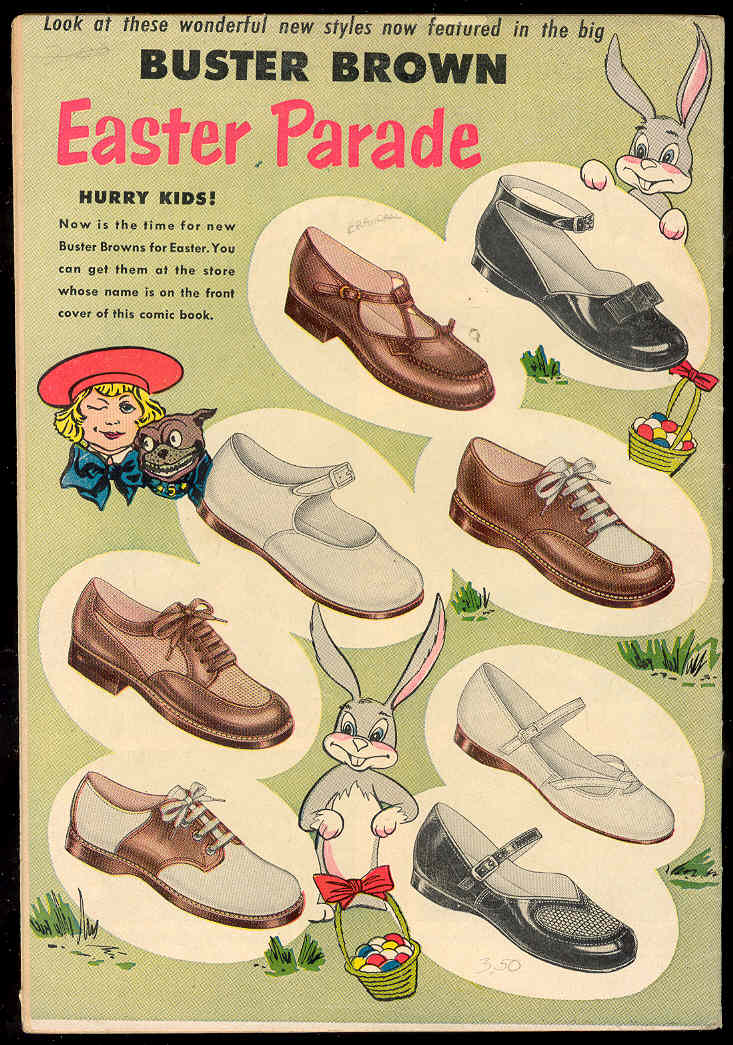

Louis became increasingly known as a center for shoe manufacturing, and competing factories set up in the city. 1901-1920s: Growth and labor issues Īs Brown Shoes grew, St. Four years later the company bought the rights to Buster Brown, a character developed by cartoonist Richard F. The company competed as Brown shoes were sold throughout the Midwest at prices lower than New England shoes, and by 1900 the company was growing at a rate of $1 million a year. In 1895, the Brown Shoe Company factory had about six hundred employees who could make five thousand pairs of shoes and boots a day. Desnoyers also retired, and the name was changed to Brown Shoe Company.

In 1886, the company became the Brown-Desnoyers Shoe Company, after Mr. In 1881, it was incorporated as the Bryan Brown Shoe Company. The company hired five skilled shoemakers from Rochester, New York, to start the factory in St. Bryan and Jerome Desnoyers also as investors. After four years in his brother’s wholesale shoe business, Brown had the funds to found Bryan, Brown and Company to make women’s shoes, with Alvin L. At that point, most shoes were manufactured in New England. Louis in 1873 to work in his older brother’s shoe business, and saw potential for shoe manufacturing in St.

Founder George Warren Brown moved from New York to St. The company began business in 1878 and incorporated in 1881 as Bryan-Brown Shoe Company. Louis and was originally named Bryan, Brown & Company after its founders George Warren Brown and Alvin Bryan. History 1886–1900: Brown Shoe Company Previous logo Scholl’s Shoes, LifeStride, Naturalizer, Bzees, Franco Sarto, Sam Edelman, Via Spiga, Vince, George Brown Bilt, Carlos by Carlos Santana and Fergie Footwear. Current brands include Famous Footwear, Diane von Furstenberg (DVF), Rykä, Allen Edmonds, Dr. On May 27, 2015, Brown Shoe changed its name to Caleres. In the 1970s, Brown operated Famous Footwear, Cloth World fabric stores, Bottom Half jeans stores, and Meis department stores. Louis, it underwent several name changes for a time, the Hamilton-Brown Shoe Company was the largest manufacturer of shoes in America. Founded in 1878 as Bryan, Brown & Company in St. Its headquarters is located in Clayton, Missouri, a suburb of St. is an American footwear company that owns and operates a variety of footwear brands. There were a few reprint books in the 1970s, but nothing new that I can find.Caleres Inc. The Buster Brown comic book ran from 1945 until 1956, with a handful of additional one-off issues throughout the 1950s.Īfter that, the only new Buster Brown material I'm aware of are commercials. Buster Brown didn't receive any notable media exposure again until a radio show in 1943, and then a television program in 1951.

"Buster's Mix-Up" was #9 (I think) and was first released on May 26, 1926. There were, I believe, 49 Buster Brown shorts in all. Tige the dog was played by Pal (at some point renamed Pete), who would later go on to become the iconic Petey in Our Gang shorts.
#Shere to buy classic buster brown shoes series
Beginning in 1925, a series of live-action comedy shorts were produced featuring Arthur Trimble in the titular role. Outcault continued drawing the character in the comics until 1921.īut the character continued on. The character was then bought by the Brown Shoe Company in 1904 and debuted as the company mascot at the World's Fair in St. It was created by Richard Outcault, who is perhaps better known as the creator of the Yellow Kid from almost a decade earlier. However, Buster Brown was actually a comic strip character BEFORE become a shoe mascot.īuster Brown debuted as a comic strip in the New York Herald in 1902. Though certainly not as popular as they once were, I distinctly recall a time when "Buster Browns" were the 7-year-old's equivalent of Air Jordans or Crocs. If you're at all like me, you're probably more familiar with Buster Brown via the shoes than anything else.


 0 kommentar(er)
0 kommentar(er)
